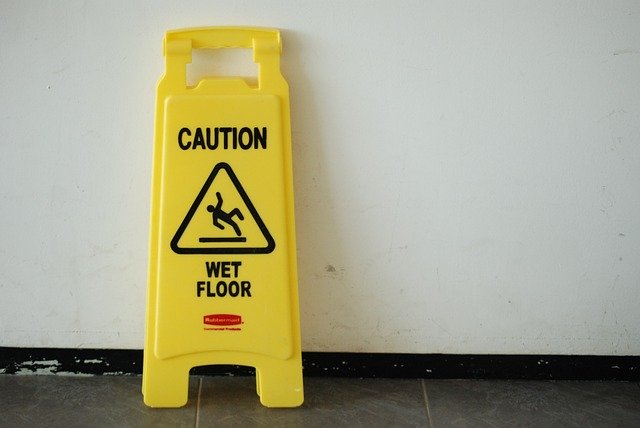Leading Accidents that Result in Concussion
A concussion is a mild form of Traumatic brain injury (TBI) that affects brain function and usually caused by a blow to the head, bump, violent shake or any blunt force to the area. Concussions are usually temporary but are a common result of motor vehicle accidents or any other form of personal injury. It’s important to note that even a violent shake of the upper body can cause a concussion.

Most of those who suffer from a concussion, recover quickly and fully. However, in more serious cases, symptoms can last for weeks or longer.
Symptoms of a Concussion
It’s important to know that concussions don’t always present symptoms. If symptoms do show up, they may not present themselves right away and can last for days, weeks or longer. The most common symptoms of a concussive traumatic brain injury are amnesia (memory loss), headaches and disorientation.
Physical Symptoms of Concussion:
- Ears ringing
- Headaches
- Nausea
- Vomiting
- Fatigue
- Blurry vision
- Fluid or blood draining from the nose or ears
Other symptoms may include:
- The inability to remember the traumatic event that caused the concussion
- Confusion
- Feeling of dizziness / Confusion
- Problems with speech
- Sleep disturbances
- Feelings of depression, nervousness and/or anxiety
- Feeling isolated or alone
When to Seek Medical Attention
Seek medical attention immediately if you or your child has suffered from a head injury – even if emergency care isn’t required.
Leading Accidents that Result in Concussion:
Motor Vehicle Related Injury
Motor vehicle accidents are a common cause of mild or severe TBIs or concussions. These head injuries can occur from any head injury such as hitting the dashboard, driver window or another passenger.
Slip & Falls
When you think about a slip and fall injury, you probably imagine sprains, broken bones, bad bruises or pulled tendons. Head injuries though are very common – so common in fact that they are one of the leading causes of mild to very severe, life-changing forms of concussion.
Any of these slip and fall accidents can result in a mild to severe concussion:
- Slipping on the wet floor
- Falling in a store and knocking your head on the floor or against a shelf
- Tripping over an obstacle or crack on the sidewalk resulting in a blow to the head
- Falling in around someone’s residence and knocking your head
Assaults
It’s obvious that victims of any type of physical assault are at risk for having a concussion. Any blow to the head, twist and or fall can result in a mild to serious head injury.
Playing Sports
The Public Health Agency of Canada Reports that for females, approximately 20,000 (45%) of brain injuries result from sports and recreation. For males, approximately 26,000 (54%) of brain injuries result from sports or recreational injuries.
According to the Canadian Hospitals Injury Reporting and Prevention Program (CHIRPP), Ice Hockey, Rugby and Ringette are the most common sports with the highest the proportion of brain injuries among children and youth 5-19 years of age, ranging from 27% to 44% of all injuries that happened while playing these sports.
According to the government of Canada, 1 in 2 Canadians has little to no knowledge about concussions. Since only 4 in 10 Canadians are aware of available concussion tools and resources, we have added some reliable and trusted sources below to learn more about the causes and treatment of mild or severe concussions.
Contact A Trusted Personal Injury Lawyer
If you or a loved one has suffered from a mild or severe concussion resulting from a motor vehicle collision, or slip and fall, Tim Louis and his compassionate and talented legal team can give you the reliable, trusted advice you require. Contact us today for a free consultation at 604-732-7678 or TimLouis@TimLouisLaw.com
Sources:
https://my.clevelandclinic.org/health/diseases/15038-concussion







 Repetitive Strain Injuries (RSI) can result from a buildup of damage to muscles, tendons, and nerves from repetitive motion or strain on specific parts of the body. Repetitive Strain Injuries are quite common and may be caused by a variety of common work activities, including:
Repetitive Strain Injuries (RSI) can result from a buildup of damage to muscles, tendons, and nerves from repetitive motion or strain on specific parts of the body. Repetitive Strain Injuries are quite common and may be caused by a variety of common work activities, including:
 Overall health: Eat healthy and get regular exercise to keep your body as resilient as possible, and try to avoid smoking, as this reduces blood flow and oxygen in the body.
Overall health: Eat healthy and get regular exercise to keep your body as resilient as possible, and try to avoid smoking, as this reduces blood flow and oxygen in the body.
 Pain is the most common symptom of Fibromyalgia. Patients may experience widespread or specific pain in certain areas of the body, which may include the neck, back, chest, arms and/or legs. Often the pain is felt when firm pressure is applied to muscles, tendons and or soft tissue.
Pain is the most common symptom of Fibromyalgia. Patients may experience widespread or specific pain in certain areas of the body, which may include the neck, back, chest, arms and/or legs. Often the pain is felt when firm pressure is applied to muscles, tendons and or soft tissue. 





 According to BC law, drivers must have winter tires with a 3-peak mountain and snowflake symbol or M+S (Mud and Snow) symbol located on the tire sidewall. Failing to have proper tires between Oct 1st – March 31st can result in a $109 fine and can alter how much you’re considered at fault if you’re in an accident according to I.C.B.C.
According to BC law, drivers must have winter tires with a 3-peak mountain and snowflake symbol or M+S (Mud and Snow) symbol located on the tire sidewall. Failing to have proper tires between Oct 1st – March 31st can result in a $109 fine and can alter how much you’re considered at fault if you’re in an accident according to I.C.B.C.




 Ride in Bike Lanes
Ride in Bike Lanes
 Any item or device that distracts a driver from paying full attention to the road including:
Any item or device that distracts a driver from paying full attention to the road including:


